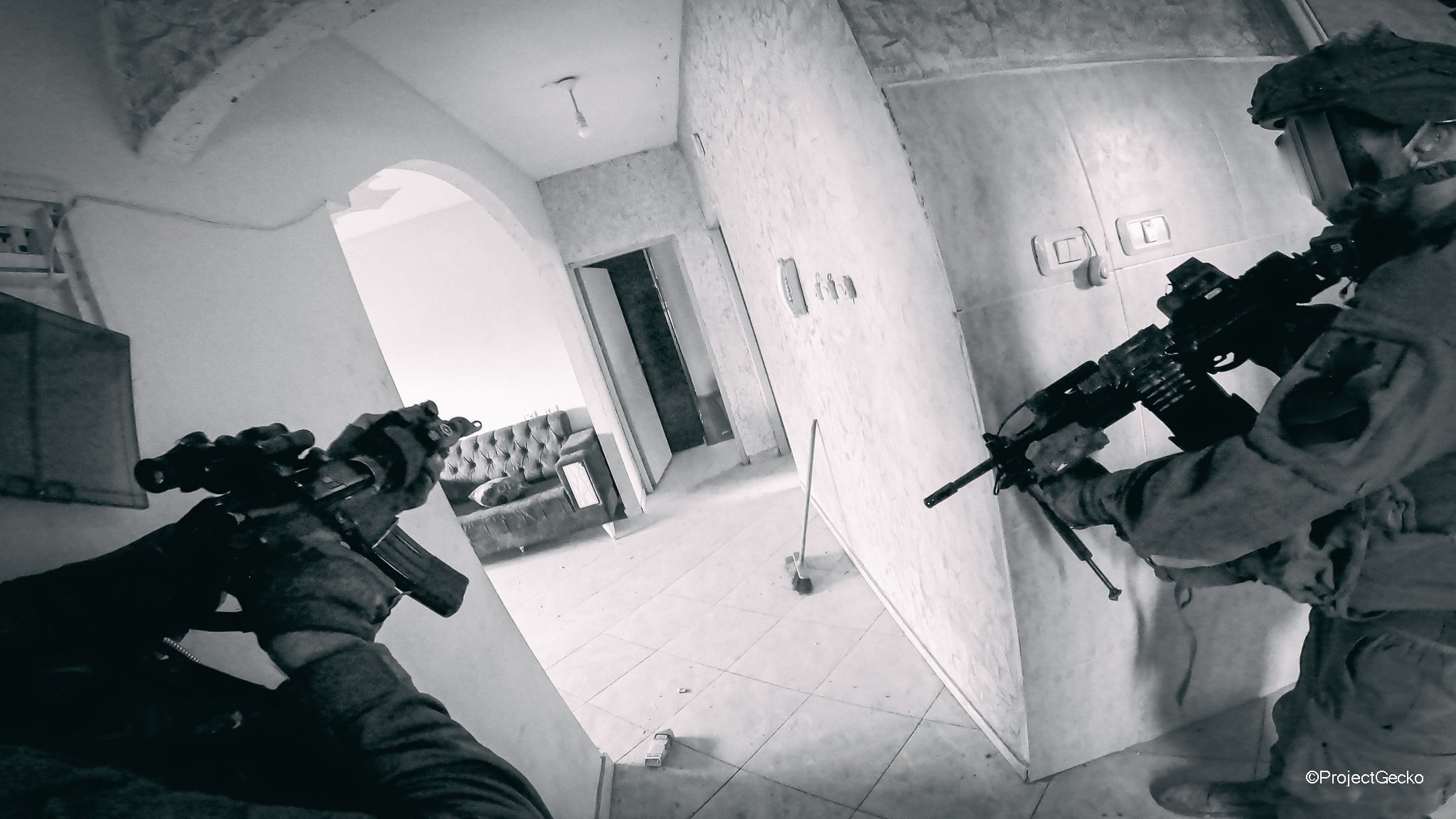Game of Angles
When you think about it, tactics at the lowest level is a game of angles. There are several different angles from which an enemy position can be approached and attacked as well as defended. Frontal attack, flanking attack, envelopment, double envelopment, deep envelopment, enfilade, defilade… those are all familiar terms for anyone who is thinking about or practicing tactics professionally or as a hobby. The effectiveness or ineffectiveness of a certain approach comes down to basic human psychology: as an attacker, you want to hit the enemy from a position that he is not expecting and therefore will not be prepared to defend well. Surprise and shock are welcome companions in this endeavor, however the goal really is to quickly get inside the enemy position and kill him before he sees you or is able to react. As a defender, the goal is the reverse: you want to be able to quickly locate the enemy main effort and shift to a favorable position so that you can hit the attacker from several unexpected directions from maximum effective weapons range, ideally before he realizes he is in the kill zone and can react to that.
This fact stays true in almost any environment. However, the very characteristic of the urban environment, dominated by human-made structures that constrict visibility and compound the unpredictability of blind spots, makes movement and combat within this environment especially deadly. Narrow alleys and wide plazas, high rise buildings and suburban residential areas, basements and tunnels, community gardens and parks, all these different types of urban architecture expose attackers and defenders to a myriad of unpredictable angles, which make it very easy to ambush and (counter-)attack the enemy.
Attacking and Defending within Buildings
What is true for the outside environment stays true within buildings. Narrow hallways, winding and twisting rooms with several doors, different types of stairways, large and small windows and many more offer a myriad of ways to expose oneself without realizing it. Beyond angles, buildings are spaces for humans to live and work in, therefore they will be full with furniture that constricts movement and conceals angles, with debris from prior fighting further restricting movement.
Real world layout of a real-world apartment. Things get complicated here.
Our team on tour / 2024
… real urban combat is very different from a clean training environment.
Hw can we best operate within this environmeT
The strongest human instinct is the survival instinct. Humans, like most other living beings, have an intense desire to live, even those who are reckless or ready to die for their cause. This means that when defending inside a building, defenders will choose positions that are most advantageous to them. Most humans are very familiar with buildings and they will instinctively go for positions that minimize their own exposure and permit them to hit their enemies from an advantageous position.
Applying this knowledge to fighting inside of buildings leads to a few conclusions.
In a very simple, medium sized single room with only one door and without any other openings (windows, doors, mouseholes) the most defensible position will be the close corner of that room.
Unless a greater depth, such as room to room situation is available for the opfor, The corner is the most defensible place in a simple room…
Incidentally, this basic room layout has dominated the tactical training environment due to its simplicity for training and its very high safety for live-fire training. For live-fire training, shoothouse designers and safety personnel do not have to worry about stray bullets for single room one door no other opening type of setups. When it comes to training without live ammunition, the availability of this type of room in military facilities is also very high. Most military buildings, be it barracks or office buildings, consist of single rooms with only one door along a long corridor. This setup maximizes usable space for work and recreation/sleep. And since funds are always limited, these training rooms, be it with or without live-fire, are usually unfurnished.
The prevalence of this type of training environment, combined with the lack of realistic force-on-force training, has led to the development of two very closely related types of CQB techniques: strong wall and opposing corners. In both techniques, the no. 1 and 2 guys quickly enter the room (dynamically or deliberately, doesn’t matter) and push into the corners, since in this type of environment that’s where the enemy is most likely located.
… and strong wall and opposing corners techniques seem optimal.
Unfortunately, these techniques break down when considering the inside of realistically set up buildings and the actions of thinking enemies. Looking at the problem from a defender’s point of view, the most important type of question to ask would be: why would a defender take up a position that directly exposed him to enemy fire without any type of cover in the corner and without a way of escaping? Most likely, a defender would not sit in a single room with no escape route but would look for a better position or evacuate the building in order to keep the fight going from an adjacent building.
When it comes to room anatomy, most often than not, rooms are furnished. A lot of furniture is positioned along walls and close to doors and windows, preventing attackers entering the room to flow along the walls and push into the corners. Most rooms have more than one opening, which could be another door, a window, or a mousehole that a defender deliberately created. A position from beyond this other opening is much more defensible and makes it much easier to engage targets in the room than a position from within the room. This way, defenders can engage from cover and concealment and outflank would-be attackers. Attackers entering the room, especially if they haven’t prior sliced the door and are entering in a dynamic fashion, will expose their flanks and rears to defenders ambushing them from several rooms across.
But once the room gets more complicated, defending from the depth of the room is more logical and the defender has a very good angle to flank attackers.
The Antidote to the Game of Angles
When conducting realistic training it becomes obvious that neither strong wall nor opposing corners are optimal techniques in fighting inside of buildings. They have gained dominance in Western CQB training because of the limitations we impose on ourselves by limiting our training to unrealistic live-fire training repetitions with paper targets as enemies and simple unrealistic room setups without any furnitures.
This disconnection between the training scenarios employed and the realistic conditions soldiers are likely to face in actual combaths of course logical reasoning. first, simulating SAFELY such a risky situations is challenge by itself. second, predicting how the battle space will look like and work like requires understanding of WHERE it will be, and against WHO. this requires effort. We argue that training often does not align with the genuine demands and situations that soldiers will encounter, leaning instead towards idealized scenarios that trainers wish them to experience. The proposed solution is a shift towards more realistic training environments that accurately reflect the conditions and challenges soldiers are expected to face. it need to look similar, it need to respond close enough to reality.








